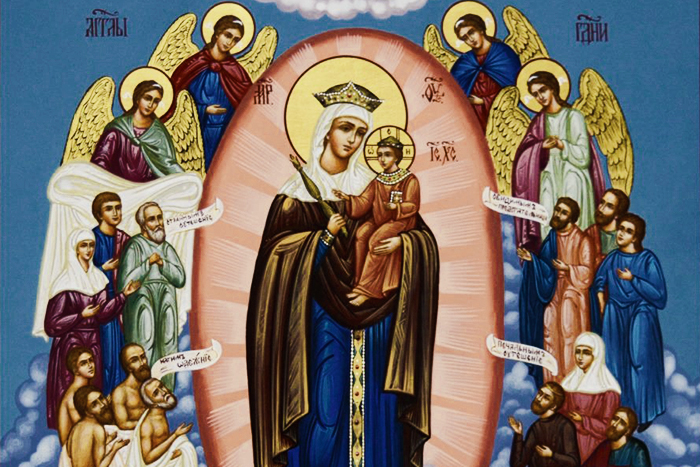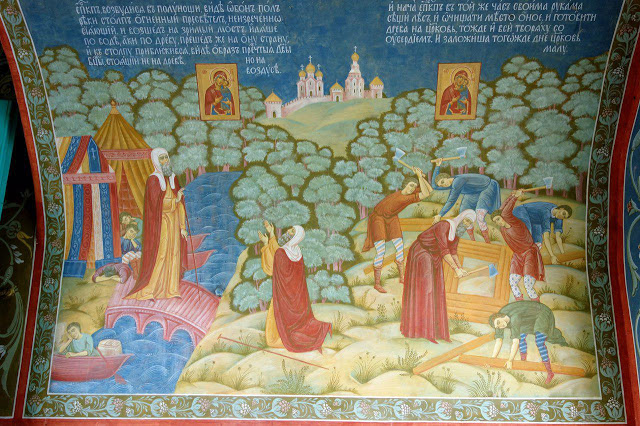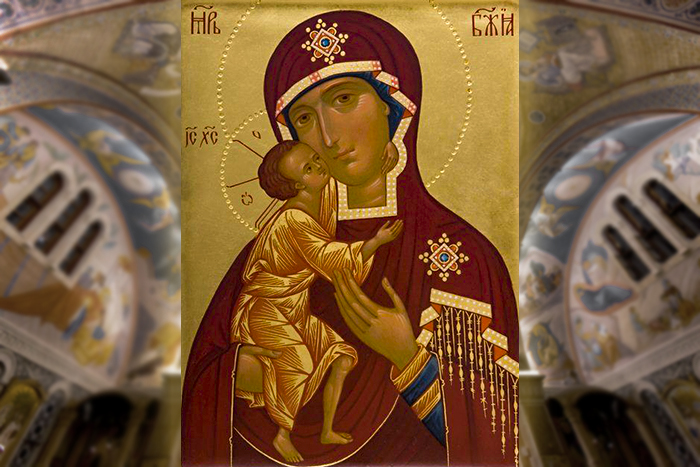Over the centuries, the various aspects of Christ’s early years were separated into individual feasts on different days: His Nativity, the Visitation of the Magi, His presentation in the Temple, and His circumcision. But the principal event of the Feast of Lights – Christ’s Baptism – continued to be commemorated on the 6th of January. Why is this event so important?
The event depicted in the icon is that described in the Gospels of Matthew, Mark and Luke; here is Matthew’s version:
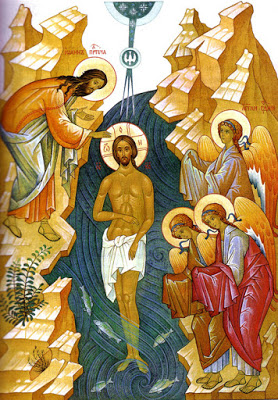
Then Jesus came from Galilee to John at the Jordan to be baptized by him. And John tried to prevent Him, saying, “I need to be baptized by You, and are You coming to me?” But Jesus answered and said to him, “Permit it to be so now, for thus it is fitting for us to fulfill all righteousness.” Then he allowed Him. When He had been baptized, Jesus came up immediately from the water; and behold, the heavens were opened to Him, and He saw the Spirit of God descending like a dove and alighting upon Him. And suddenly a voice came from heaven, saying, “This is My beloved Son, in whom I am well pleased.” (Matthew 3:13-17)
This, then, is the Epiphany (revelation) of the Holy Trinity, otherwise known as Theophany which literally means a “revelation of God” in Greek (Θεοφάνεια; the Russian is Богоявление and means the same).
 The paradox that Jesus Christ might be revealed as God through an act of submittal to a mere man, John, is shown well in the Icon. Though John is baptizing Christ, it is the former who is shown bent over in reverence to the latter. In other icons, John is shown with his face turned toward heaven and beholding the miracle of the Theophany; either way, despite being the baptizer, he is not central to the scene. Near to John is a tree with an axe laid at the root, recalling John’s own preaching to those who came to him: “And now also the ax is laid to the root of the trees: therefore every tree which brings not forth good fruit is hewn down, and cast into the fire.” (Matt 3:10). Present in the icon, this shows that whilst the Baptizer must now “decrease so Christ may increase”, John’s teachings and role are not done away with now the Holy Trinity has been revealed. On the opposite bank to John the Baptist, angels wait invisibly to receive the newly baptized Christ and clothe Him. And so, on the left is the forerunner of Christ, John, with his sermon of repentance represented by the tree and axe; on the right, the angels wait with reverence to accept the newly revealed Son of God. In the middle – the moment of revelation itself.
The paradox that Jesus Christ might be revealed as God through an act of submittal to a mere man, John, is shown well in the Icon. Though John is baptizing Christ, it is the former who is shown bent over in reverence to the latter. In other icons, John is shown with his face turned toward heaven and beholding the miracle of the Theophany; either way, despite being the baptizer, he is not central to the scene. Near to John is a tree with an axe laid at the root, recalling John’s own preaching to those who came to him: “And now also the ax is laid to the root of the trees: therefore every tree which brings not forth good fruit is hewn down, and cast into the fire.” (Matt 3:10). Present in the icon, this shows that whilst the Baptizer must now “decrease so Christ may increase”, John’s teachings and role are not done away with now the Holy Trinity has been revealed. On the opposite bank to John the Baptist, angels wait invisibly to receive the newly baptized Christ and clothe Him. And so, on the left is the forerunner of Christ, John, with his sermon of repentance represented by the tree and axe; on the right, the angels wait with reverence to accept the newly revealed Son of God. In the middle – the moment of revelation itself.Jesus Christ, despite being the one submerged in the Jordan, is shown as though standing up and staring straight at us. His body is depicted as strong and beautiful, as it is understood classically, and in older icons He is naked. Christ appears almost as wide as the river Jordan itself; indeed: it is as though it is Jesus Christ, rather than the river, which cuts a swathe through the rocky wilderness on either side.
The Icon of the Theophany, as well as depicting the Holy Trinity, also answers the question of John the Baptist: I need to be baptized by You, and are You coming to me? The answer is in what Jesus does with His hands. Whilst in Western art, like this painting by Da Vinci, Jesus is shown as submitting to John’s authority, in Orthodox icons Christ’s hands are not shown in prayer, but in a sign of blessing. Rather than the waters of Jordan cleansing Christ, it is Christ Who cleans the waters. This is why in the bottom of most Theophany Icons, little creatures appear to be fleeing from the feet of Christ. This is a reflection of the words of the Psalmist regarding the
Messiah (Christ): “the sea saw and fled, the Jordan turned back” (Psalm 114:3).
Messiah (Christ): “the sea saw and fled, the Jordan turned back” (Psalm 114:3).
This is the depth and profundity of the Baptism of Christ; the feast of lights which revealed the Holy Trinity, and cleansed the waters of baptism so that we, like the fishes shown in the icon, may swim in pure waters.
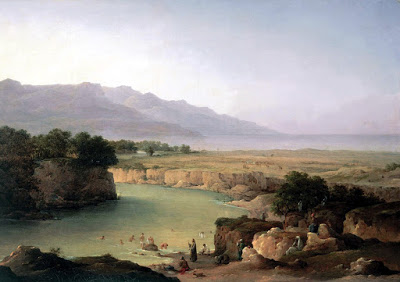
Of old, the river Jordan
Turned back before Elisha’s mantle at Elijah’s ascension.
The waters were parted in two
And the waterway became a dry path.
This is truly a symbol of baptism
By which we pass through this mortal life.
Christ has appeared in the Jordan to sanctify the waters!

